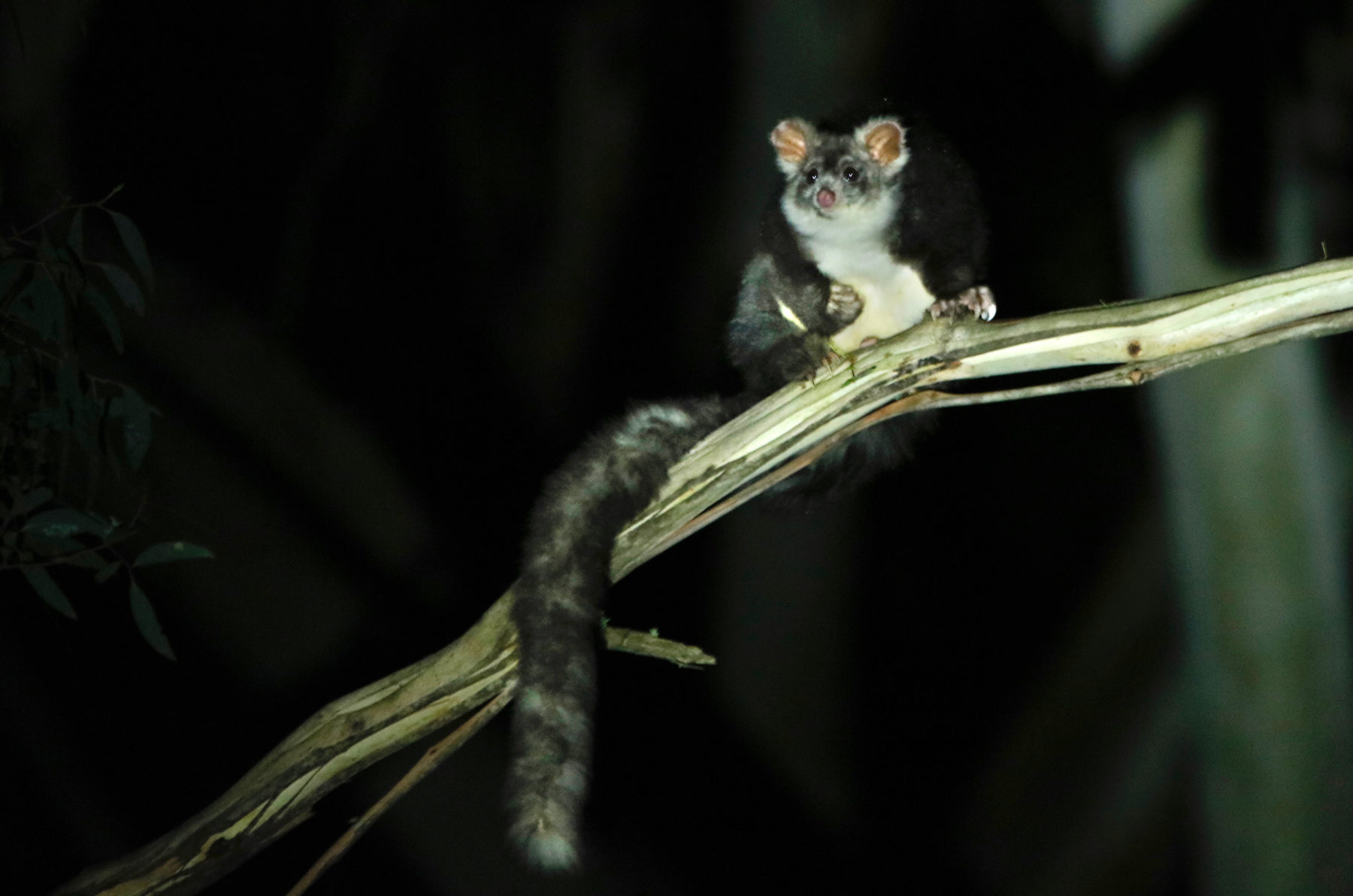Greater gliders left out on a limb

A recent survey report of Wombat State Forest revealed high numbers of these fuzzy eared tree dwelling residents, despite their population decreasing nationally by 80 per cent over the past 20 years. Last year’s commitment by the Victorian government to create three new national parks within the state, including the proposed Wombat-Lederderg National Park, signalled a collective sigh of relief for the greater glider, with their forest homes finally earmarked for protection.
But here is where the waters get murky and the greater glider, along with around 370 of its neighbouring vulnerable species mates, need more than just a cute fluffy face to secure a spot in Australia’s native wildlife future.
Despite the exciting announcement of the new Victorian national park spaces, which have the capacity to protect an additional 50,000 hectares of bushland and their native residents, the state government is yet to reveal just when these national parks will be legislated. For the greater glider population, the most worrying detail in the proposal is the agreement for continual logging of coupes within the area, managed by the Victorian State government agency VicForests.
The original inclusion of a sanction for continual logging in the intended national parks has left more than just the greater glider scratching its head. Other threatened species including the powerful owl and koala were also recorded in the area by the Victorian National Parks Association’s Wombat Greater Glider Survey, with report author, Blake Nisbet, recommending the immediate safeguarding of these parcels of bushland from land clearing to give vulnerable species a fighting chance of survival.
“Many threatened species including the greater glider depend on large hollow-bearing trees for nesting,” says Blake. “Logging operations remove trees, which if undisturbed, would formulate the next generation of hollow-bearing trees in the landscape. Ultimately logging promotes severe long-term declines of species like the greater glider, it isolates and fragments animal populations, and risks localised extinctions of our threatened fauna.”
But the trees continue to fall within Wombat State Forest, most recently under the guise of ‘salvage logging’, with VicForests removing damaged or fallen mature trees as part of recovery work after the 2021 June storms. Jordan Crook, Nature Conservation Campaigner at the Victorian National Parks Association, fears this ‘Forest Recovery Timber Utilisation Plan’ goes far beyond a targeted and delicate clean-up operation and that over 80 additional timber coupes within the soon-to-be national park, are a clear breach of the original commitment made by the State government.

“VicForests are attempting to fulfil native timber shortfalls with Wombat Forest habitat, mainly because the supply of timber from forest areas in the east of Victoria has been cut due to landscape scale fires in 2019/2020, community legal actions, and the over commitment of dwindling native timber resources by the government,” says Jordan. “Securing protection of the habitat of some of Victoria’s most threatened plant and animal life within Wombat Forest can’t come soon enough.”
Convener of Wombat Forestcare, Gayle Osborne agrees that Wombat Forest is a largely intact natural environment that can only be protected within a park structure. “We need State and Federal governments to understand that we are going to lose more flora and fauna species unless they move quickly to protect all existing habitat,” says Gayle. “When the national park is actually legislated, it will be a day of great celebration.”
Confusion over mixed messages from Victoria’s state government and it’s ‘conservation with a catch’ stance, has left the greater glider exposed to an uncertain future and raises questions nationally as to the role of native forest logging within ecologically sensitive bushland going forward.
But for now, the greater gliders of the proposed Wombat-Lerderderg National Park face the fight of their lives. With on-going logging projects showing no sign of slowing down, neighbouring species including the threatened brush-tailed phascogale, barking owl, rare mountain skink and the Bossiaea vombata (aka wombat bossiaea), which is found nowhere else on Earth, are on high alert, but hopeful that preservation will be prioritised over profit.
“The chance to include Wombat Forest in the protected areas estate comes after decades of work between community groups in the region and the Victorian National Parks Association,” explains Jordan. “The creation of the parks will give visitors from around the country a chance to enjoy the beauty of this unique forest and protect the homes of species like the greater glider, for years to come.”
For more information about the proposed national parks of the central west, and ways you can support the immediate protection of rare native forests and their vulnerable inhabitants, visit https://vnpa.org.au/action/legislate-not-log/
This article is brought to you by the Victorian National Parks Association:
Everyone who is connected to the Wombat Forest wants to see it looked after and its health improved.
The Victorian Government’s announcement that Wombat Forest will be a national park is welcome, but without a clear timeline for it being protected in legislation it is unclear how the land should be managed in the interim. The lack of certainty around the extent and future of logging within the park is causing significant concern within the community.
It is clear that a long-term collaborative well-resourced rehabilitation and conservation plan that is informed by science and traditional knowledge is urgently needed.
Any plan must be informed and developed with First Nation values and connection to country at its core. The Victorian National Parks Association wants to see the protected areas legislated and joint-management defined so we can all protect the forest together.




